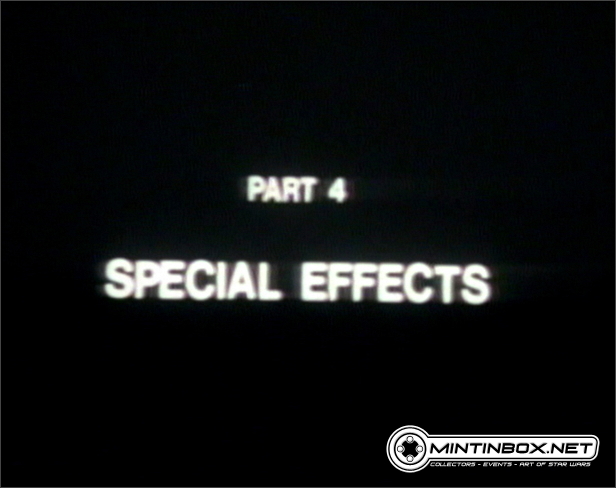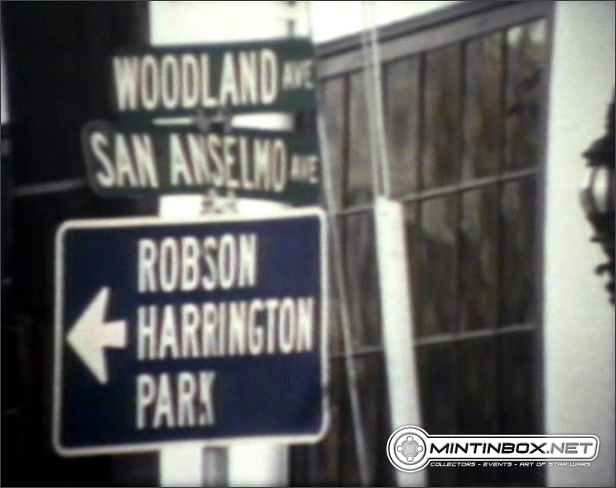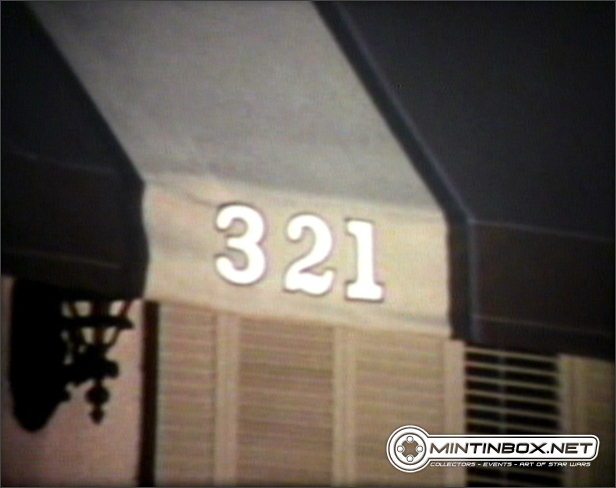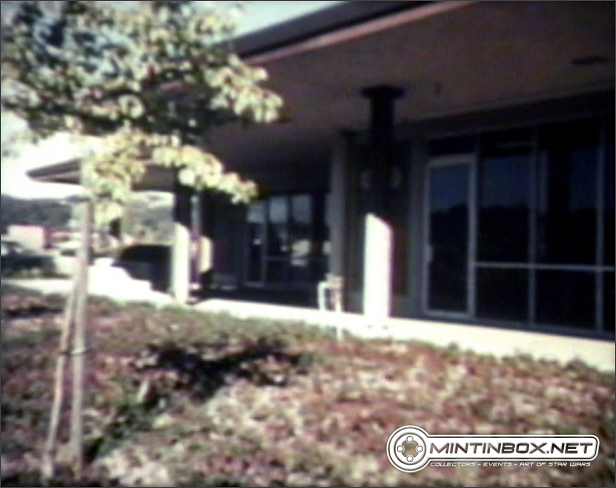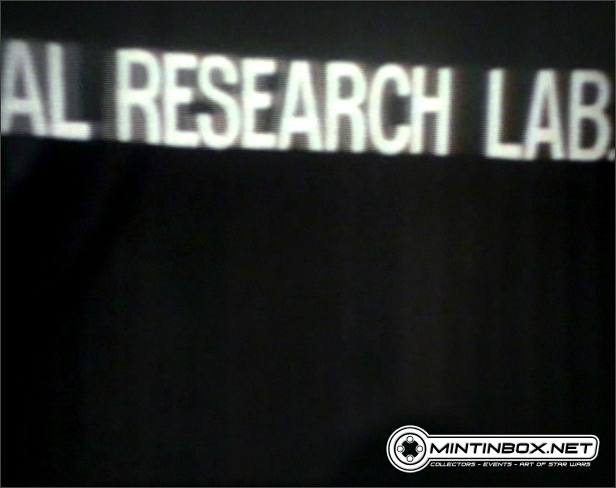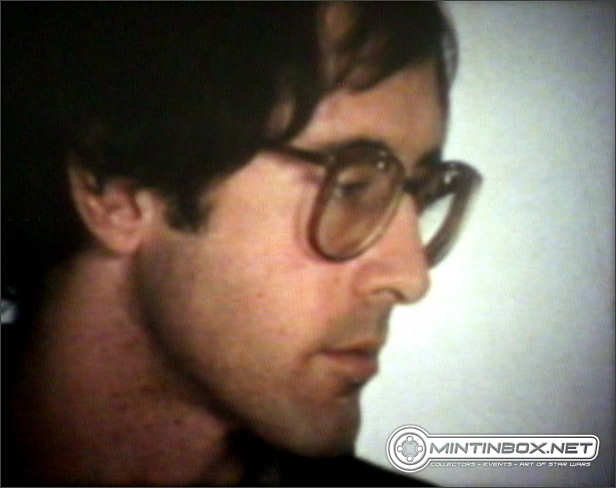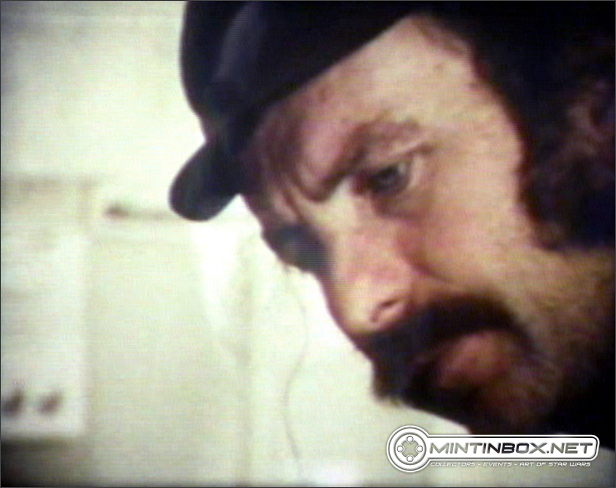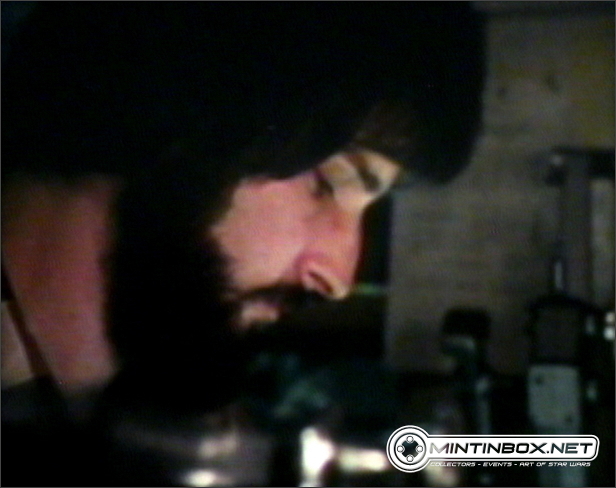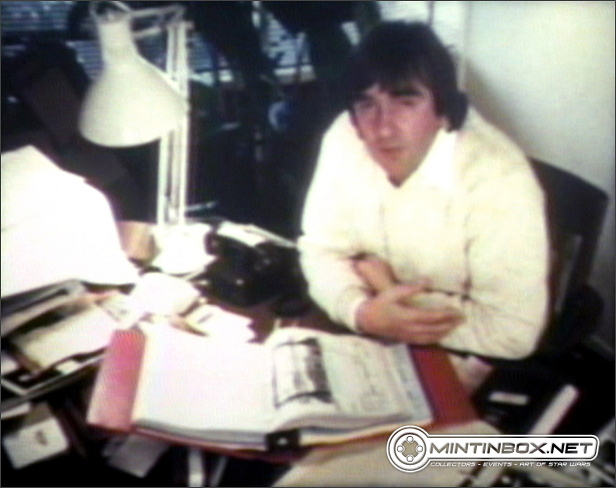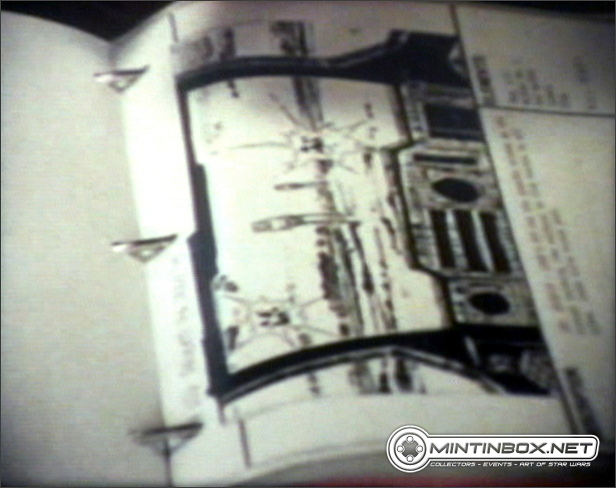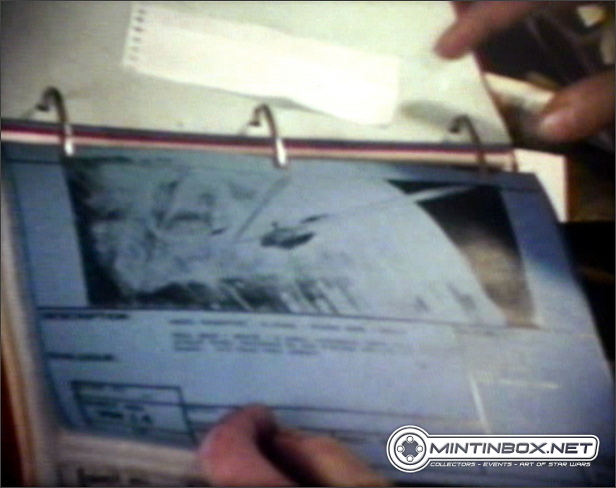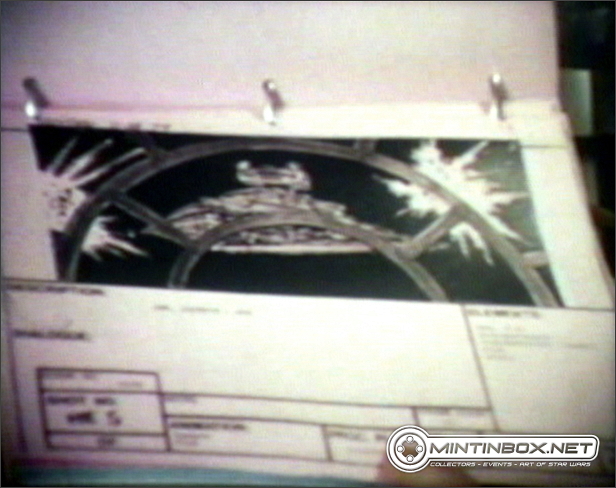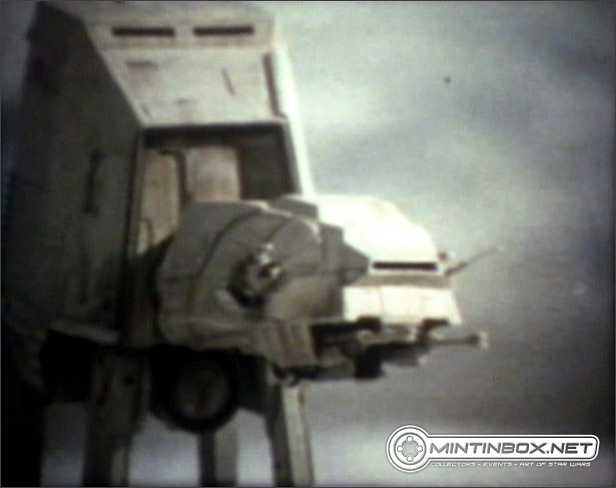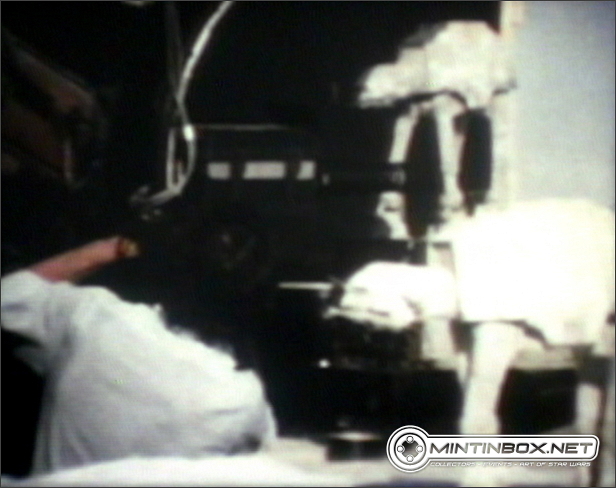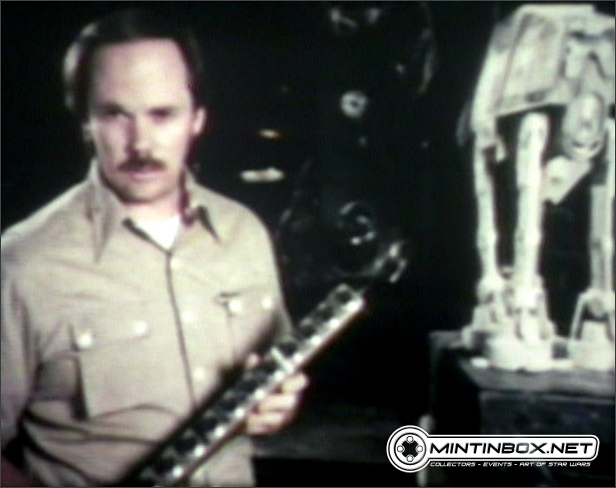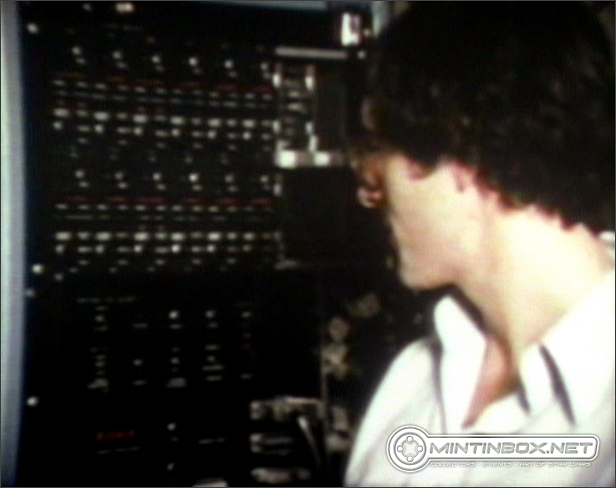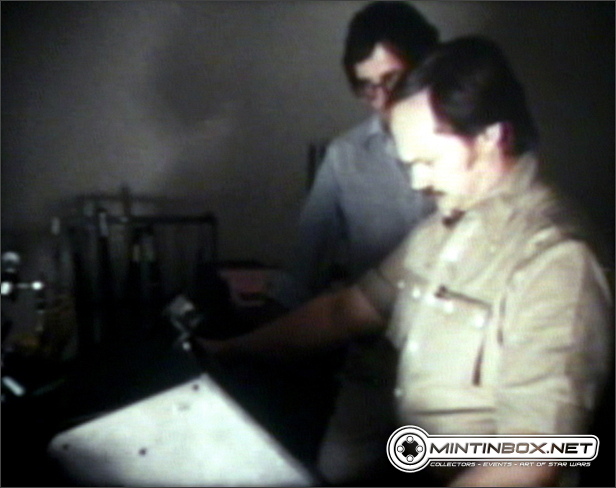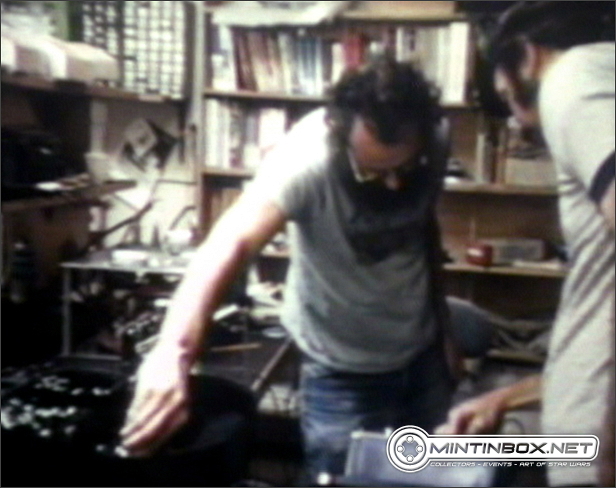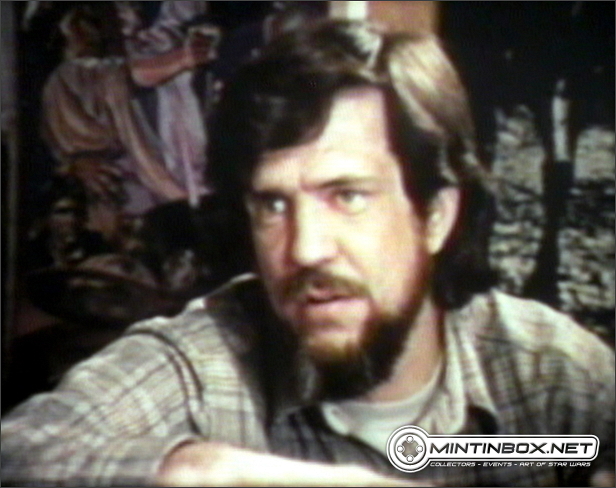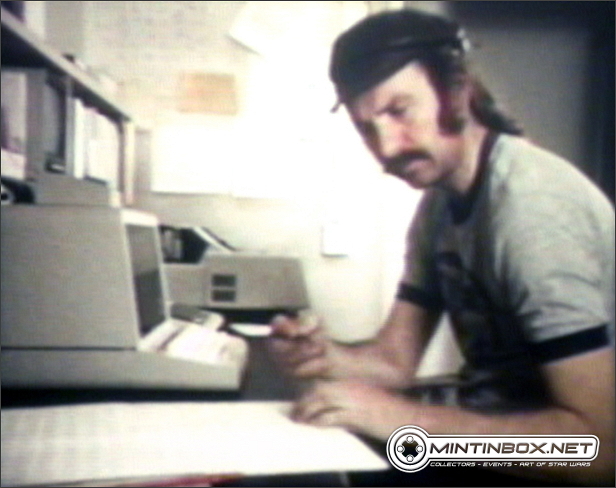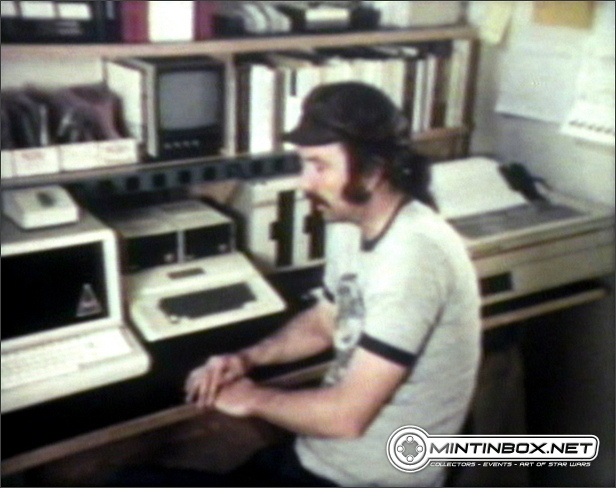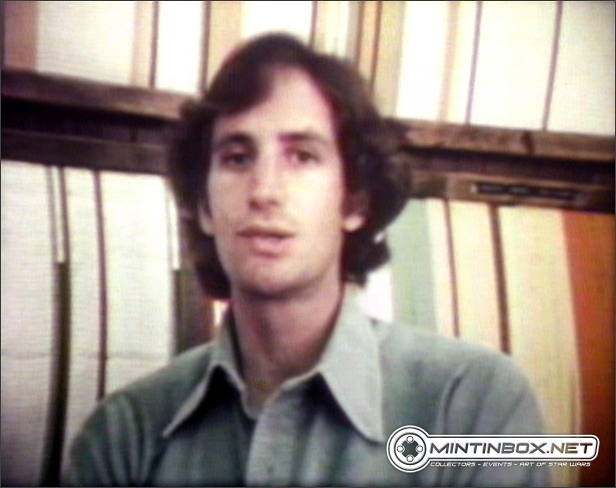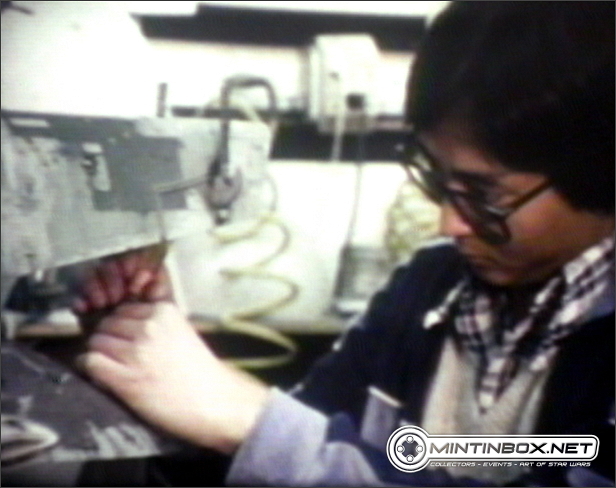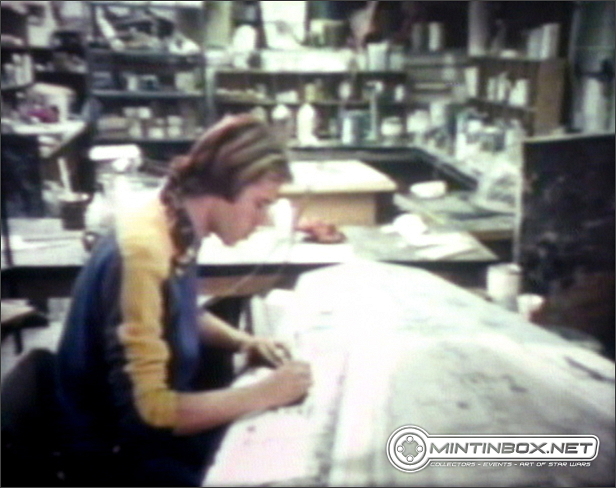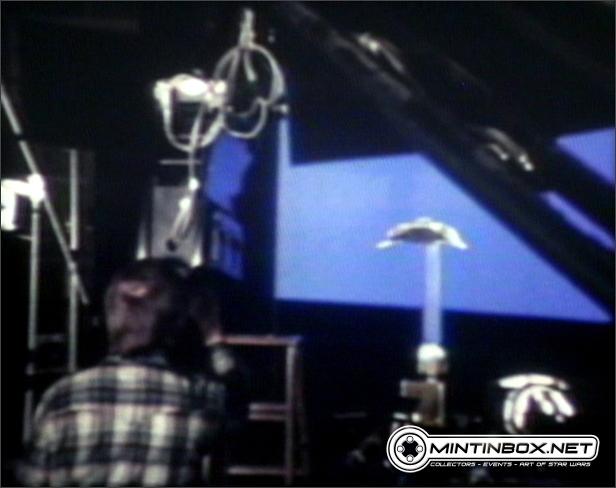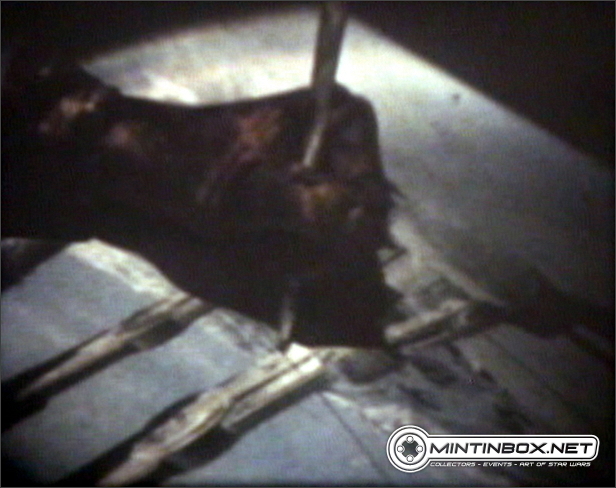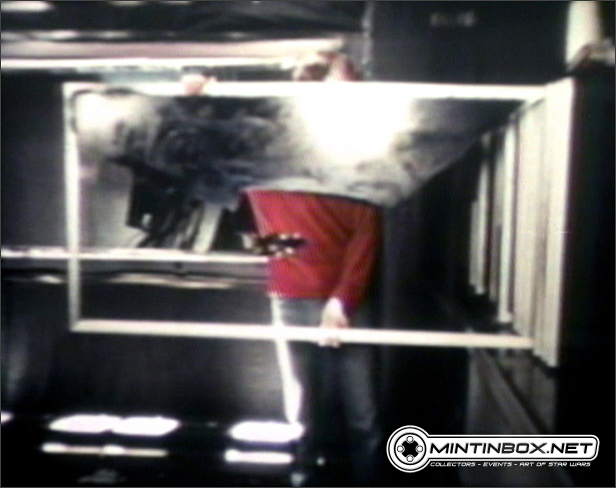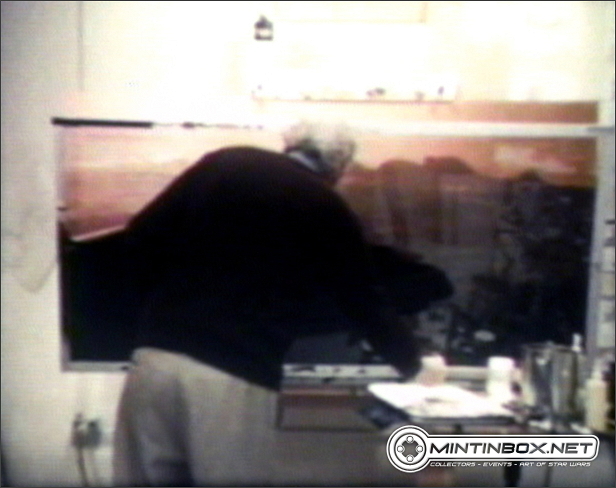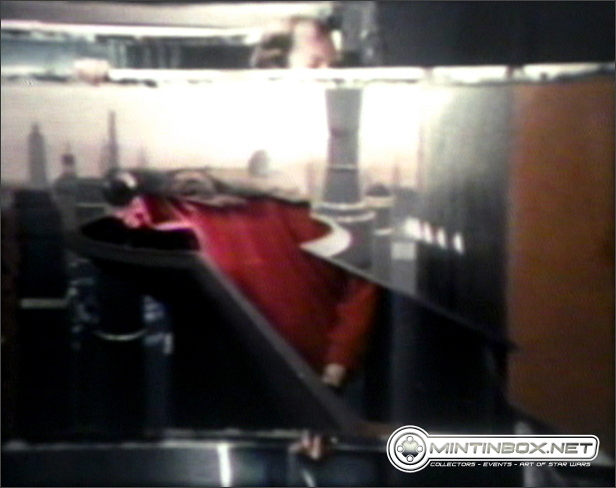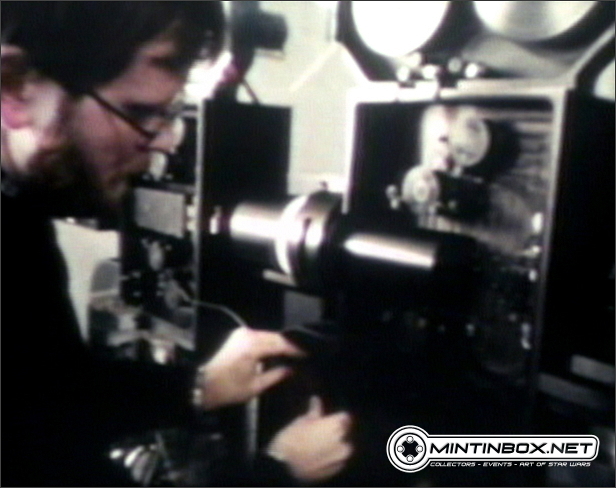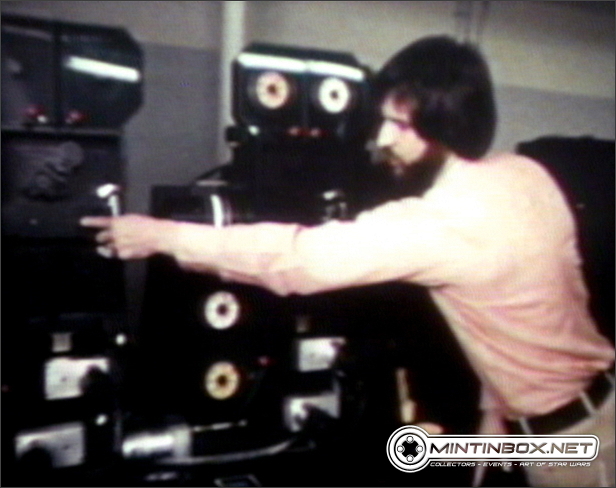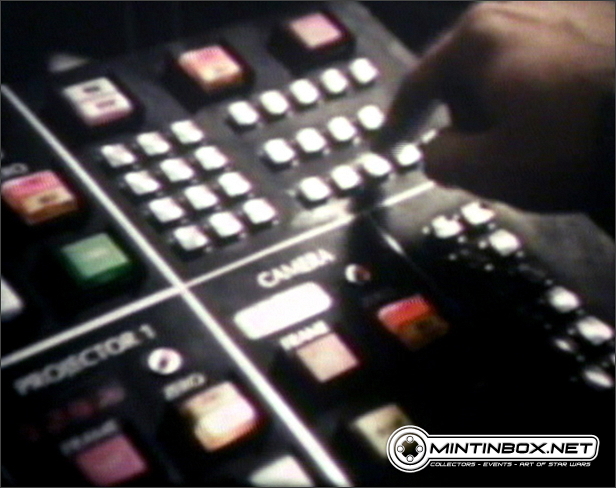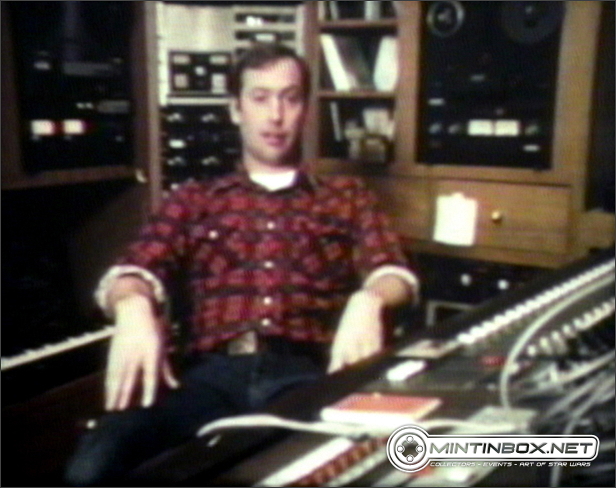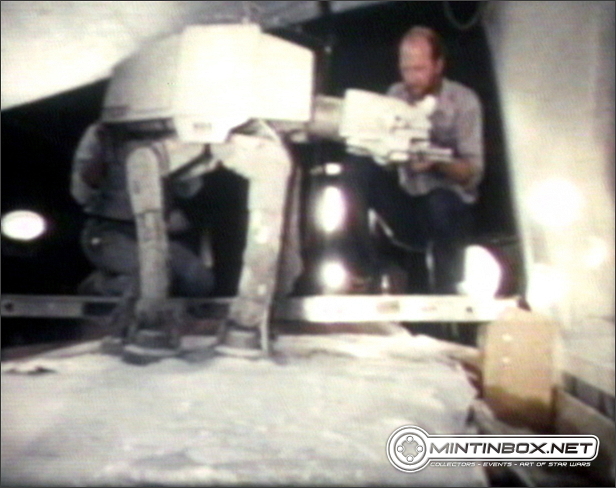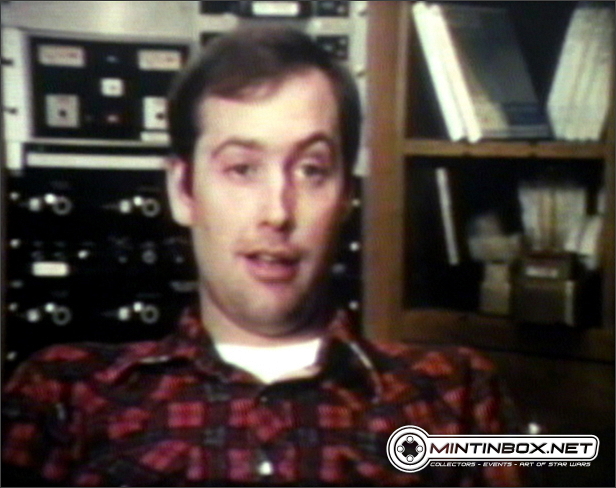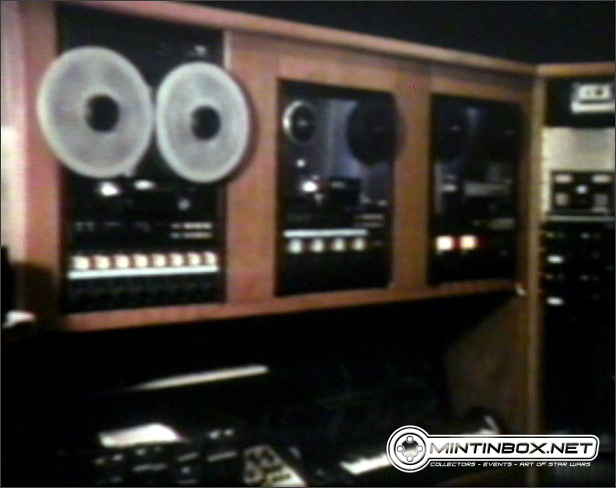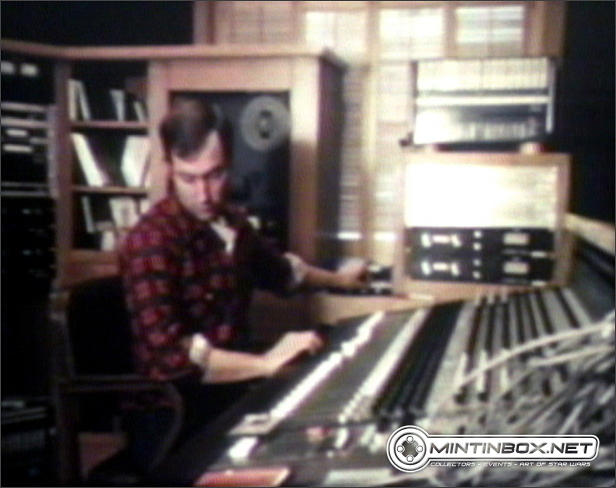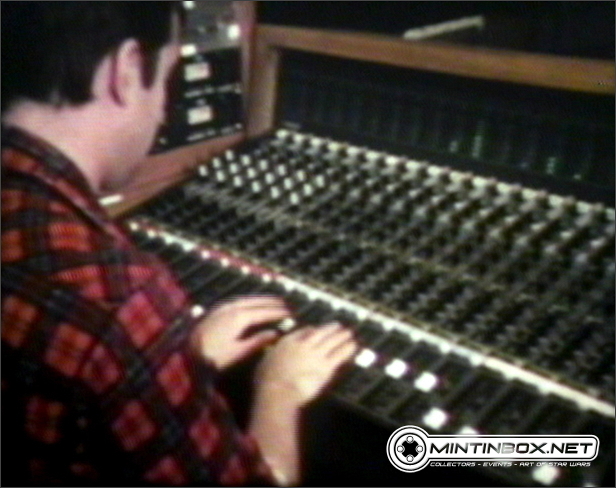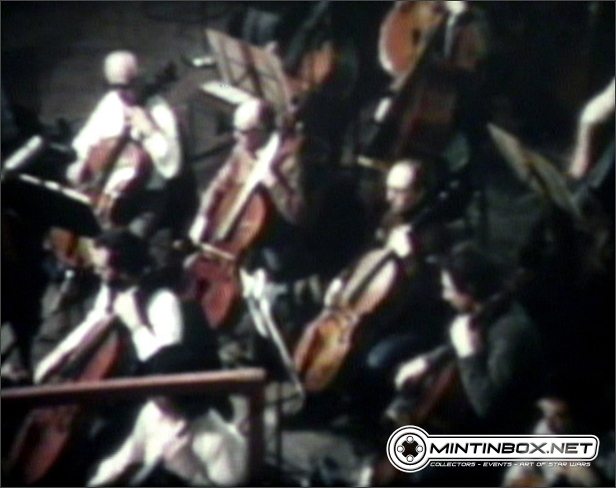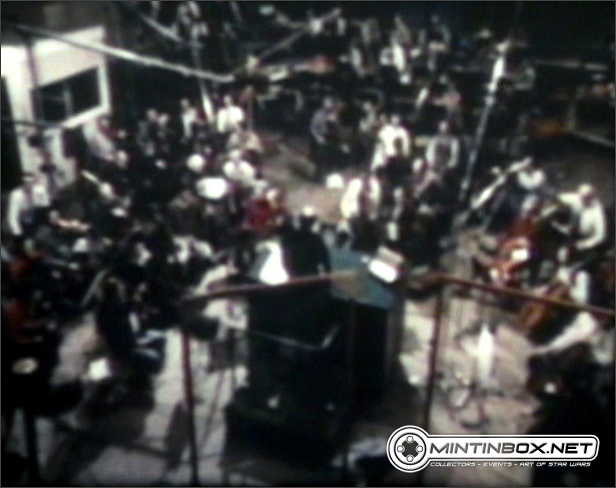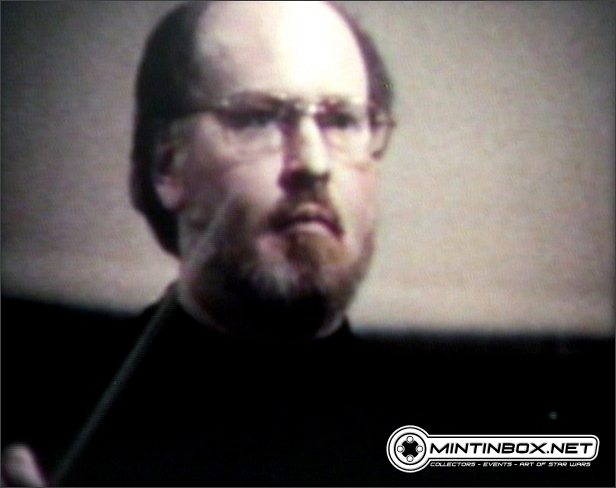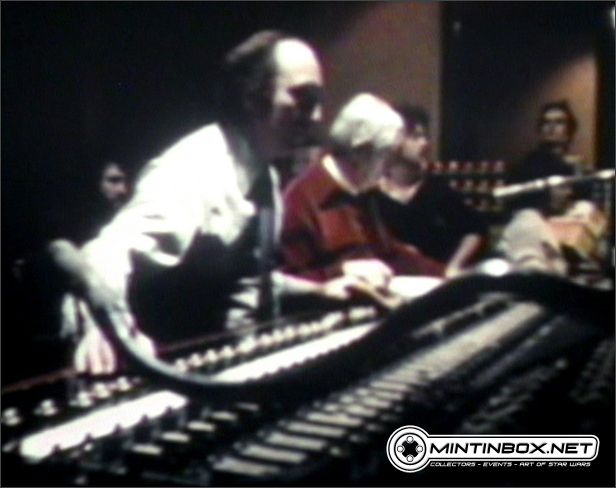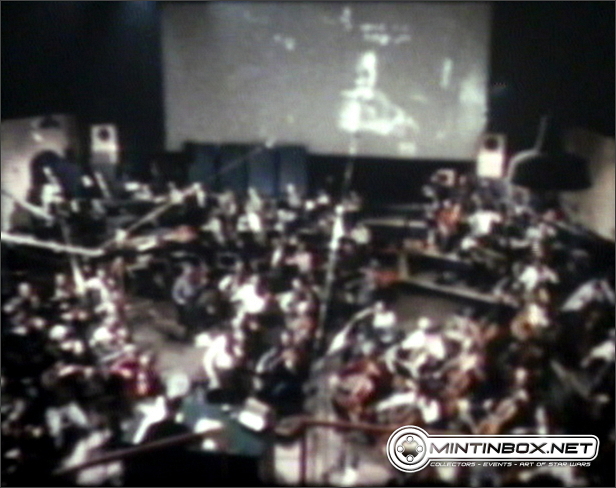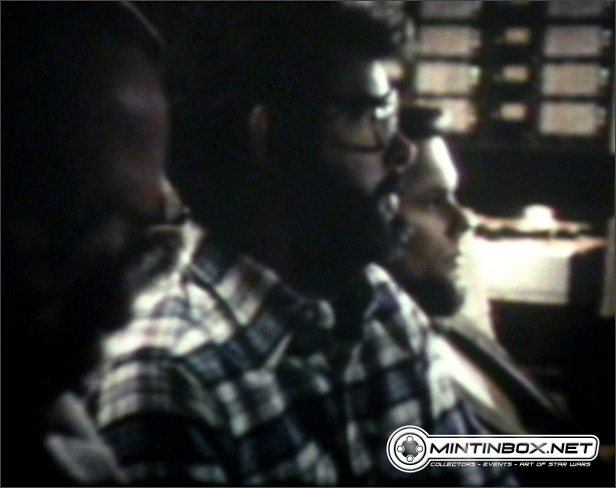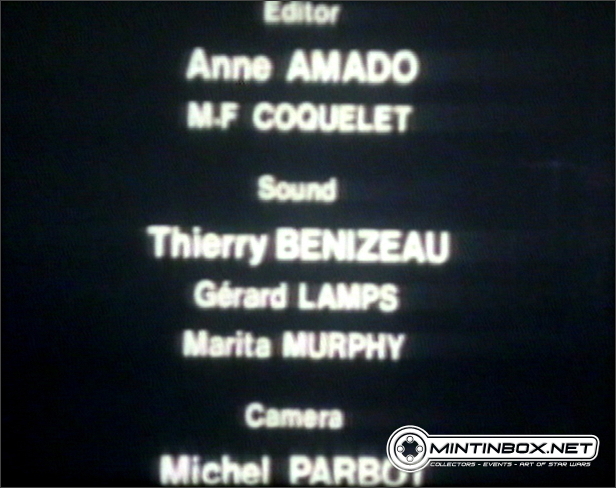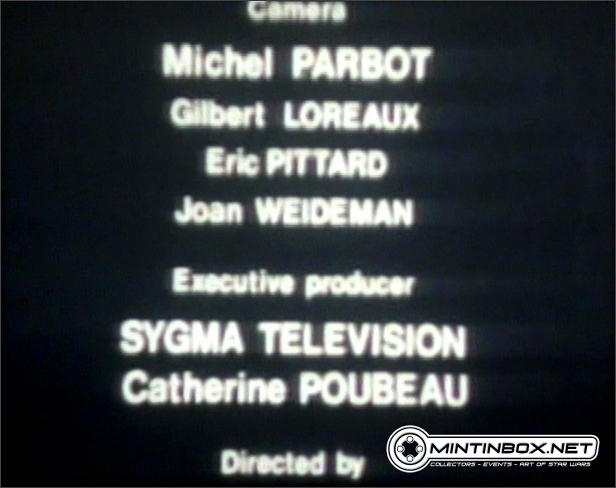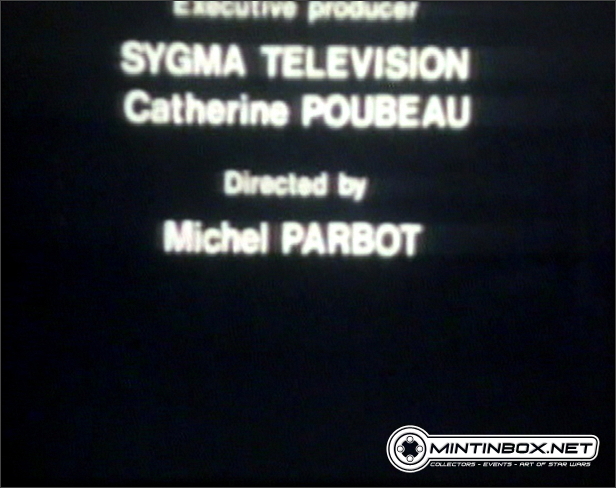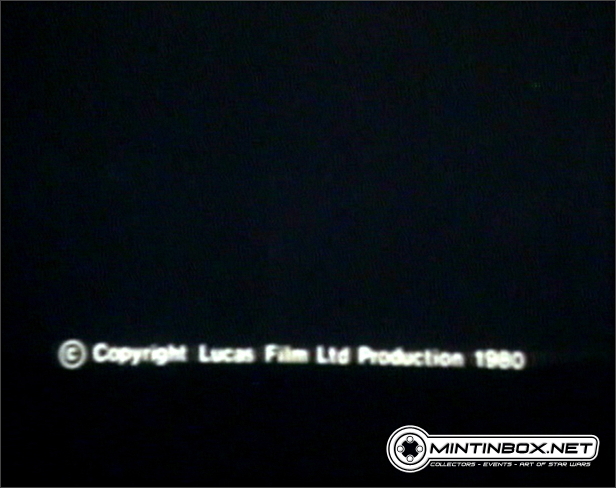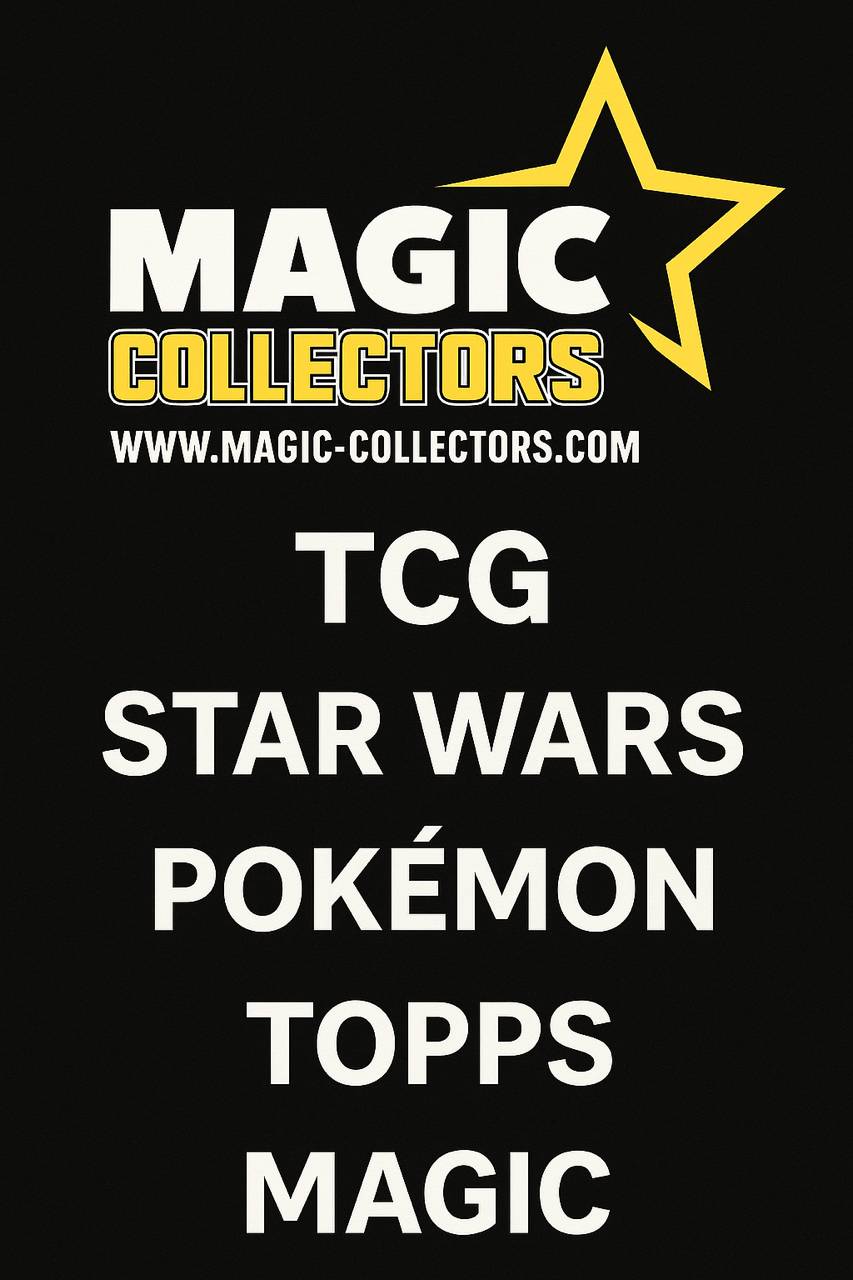
La quatrième et dernière partie (19’19 ») revient, avec nostalgie, sur les prouesses de la très secrète division d’ILM, Kerner Optical dans la réalisation des effets spéciaux : une véritable plongée dans la complexité des effets spéciaux avec le matériel technique disponible à l’époque. Kerner Optical, de l’artisanat a l’état pur mais de l’ingéniosité permanente : programmation des caméras pour les survols de vaisseaux, suivi de planning pour la réalisation des effets spéciaux (un mur entier de languettes de différentes couleurs !), réalisation des modèles des vaisseaux, incrustation image par image des effets spéciaux, réalisation des « matte painting », utilisation de la toute nouvelle et gigantesque imprimante optique pour combiner effets spéciaux, la recherche des sons et comment les assembler dans une «salade sonore » selon Ben Burtt.
Nous assistons finalement en présence de George Lucas et de Gary Kurtz à une partie de l’enregistrement de la musique sous les ordres de John Williams.
Ce documentaire doit sortir de l’oubli, les fans doivent pouvoir le voir, je ne sais pas si nous serons entendus mais au moins vous aurez pu en avoir un avant-goût plutôt détaillé.
Cette quête au documentaire perdue s’achève donc pour nous, merci Michel Parbot pour cette plongée stupéfiante dans la réalisation de l’Empire Contre-Attaque, bien loin des featurettes promotionnelles dont nous sommes gavés à longueur de temps.
The fourth and last part (19’19 ») deals, with nostalgia, about the very secret department of ILM in charge of the Special Effects: Kerner Optical: a deep overview of the complex world of special effects at that time (please remember that the « Making of » was released in 1980, long before computers were involved in any FX). Kerner Optical was really dealing with craft, but with permanent ingenuity: the cameras were programmed to act as a spaceship doing a fly-by, follow-up of the FX planning (a full wall covered with labels of various colours), the making of the spaceship, image-by-image FX inlay, the matte painting, usage of the new and huge optical printer to mix the FX, the search for the perfect sound and how to do an « audio salad » with Ben Burtt.
At last, with George Lucas and Gary Kurtz, we are able to assist to a recording session of the music soundtrack with the director John Williams.
This documentary must go out of the attic; fans must be able to watch it. I am not sure if we will be heard, but at least you got a quite detailed overview of it.
This quest for the lost documentary is over for us, thanks to Michel Parbot for this magnificent discovery about the « making of » of the Empire Strikes Back, a true documentary very far of the so many promotional featurettes, that we now have all the time.





